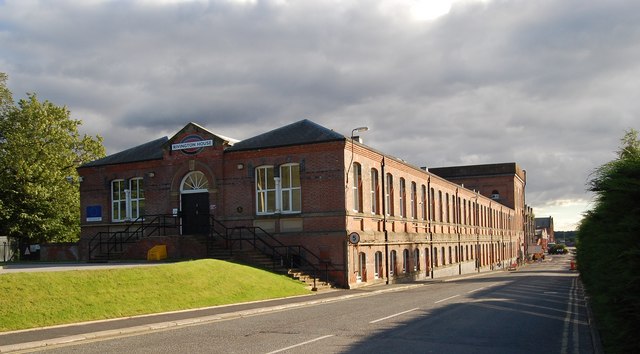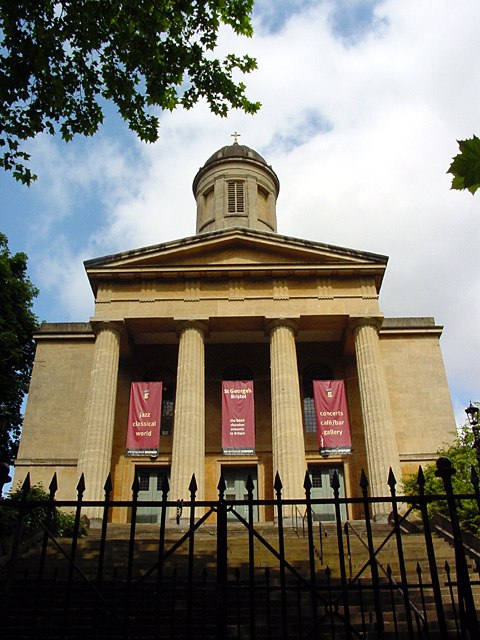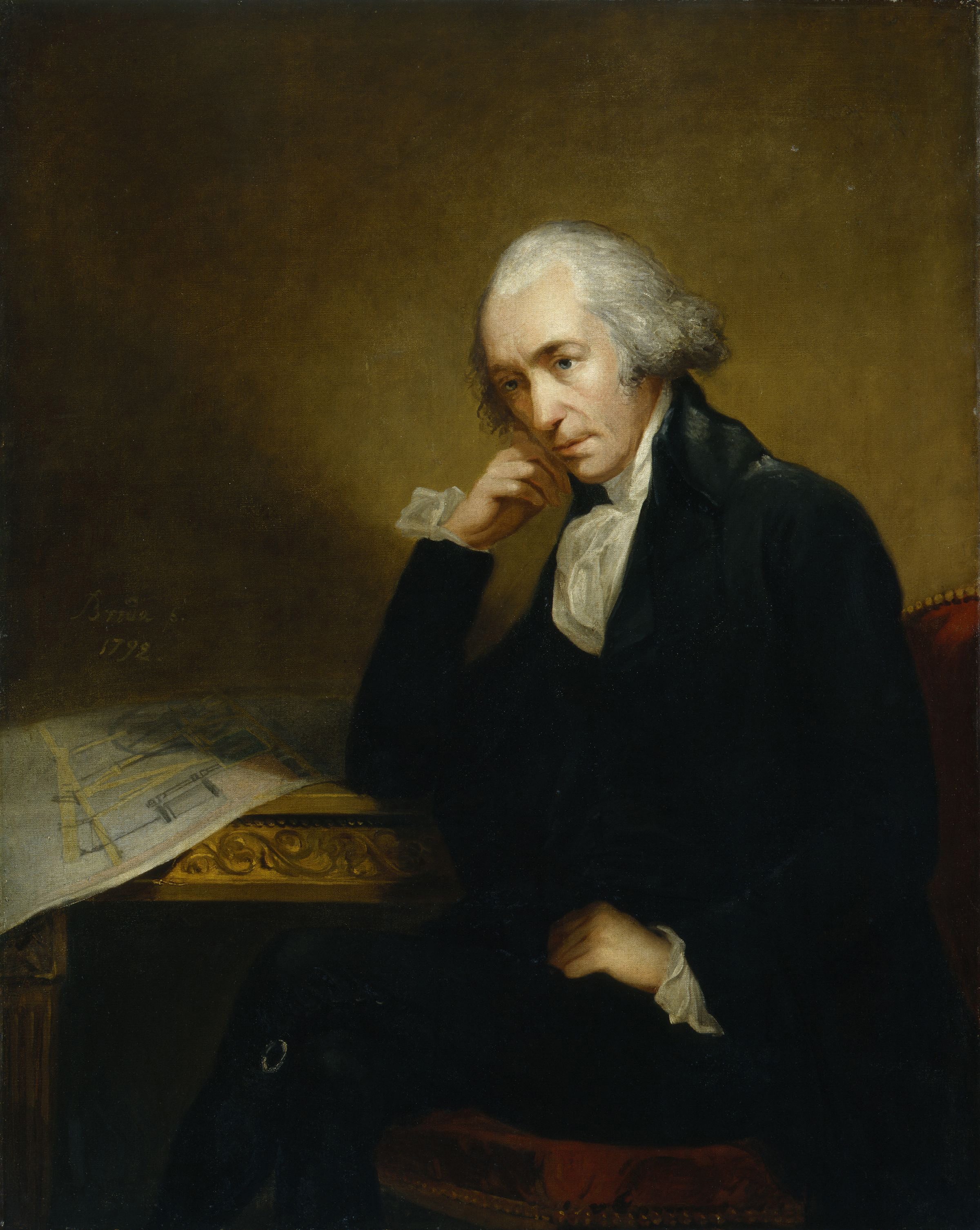|
Holy Trinity Church, Horwich
Holy Trinity Church, commonly known as Horwich Parish Church, is a Grade II listed building in Horwich, Greater Manchester, England. It is an active Church of England parish church and part of the Deane deanery in the archdeaconry of Bolton, diocese of Manchester. Holy Trinity Church is now part of the United Benefice of Horwich and Rivington, which includes the other two Anglican churches in Horwich, St Catherine's Church and St Elizabeth's Church, and Rivington Anglican Church. History There have been three chapels or churches on the site of Holy Trinity Church. It is not known when the first chapel was built, but it existed before the English Reformation when it was a chapel of ease to the parish church of St Mary the Virgin's Church, Deane. In 1565, the "commissioners for removing superstitious ornaments" took various items they considered idolatrous from the chapel. The earliest gravestone in the churchyard has the initials and date M.H. 1648, however, the church registers ... [...More Info...] [...Related Items...] OR: [Wikipedia] [Google] [Baidu] |
Horwich
Horwich ( ) is a town and civil parish in the Metropolitan Borough of Bolton, Greater Manchester, England. Prior to 1974 in the historic county of Lancashire. It is southeast of Chorley, northwest of Bolton and northwest of Manchester. It lies at the southern edge of the West Pennine Moors with the M61 motorway passing close to the south and west. At the 2011 Census, Horwich had a population of 20,067. Horwich emerged in the Middle Ages as a hunting chase. Streams flowing from the moors were harnessed to provide power for bleachworks and other industry at the start of the Industrial Revolution. The textile industry became a major employer and after 1884 the construction of the railway works caused the population of the town to increase dramatically. The old industries have closed and urban regeneration has been led by out of town developments, particularly at Middlebrook, which, since 1997 has been the base of Bolton Wanderers football club, who play at the University o ... [...More Info...] [...Related Items...] OR: [Wikipedia] [Google] [Baidu] |
St Mary The Virgin's Church, Deane
The Church of St Mary the Virgin, Deane, is an Anglican parish church in Deane, Bolton, Greater Manchester, England. It is a member of Deane deanery in the archdeaconry of Bolton, diocese of Manchester. It is a Grade II* listed building. History The church of St Mary is situated in the old township of Rumworth on high ground above the Church Brook, the Saxon ''Kirkbroke'', which flows through Deane Clough to the River Croal. St Mary, or ''St Mariden'' was a chapel of ease of St Mary in Eccles before becoming the mother church of the ancient ecclesiastical parish of Deane which was formed from the northern part of the parish of Eccles and takes its name from Deane Clough, the narrow wooded valley close to the west of the church. The church originated as a 14th-century structure consisting of a nave and chancel with a steeply pitched roof and a western tower which has since been considerably enlarged and altered. Structure The oldest part of the church is the 14th century wes ... [...More Info...] [...Related Items...] OR: [Wikipedia] [Google] [Baidu] |
Richard Knill Freeman
Richard Knill Freeman (1840, Stepney, London – 24 June 1904) was a British architect who began his career at Derby and moved to Bolton, Lancashire in the late 1860s. His work, in Victorian Gothic style and typically recalling the Decorated Period of later medieval architecture, can be seen in several cities and towns across the north of England. He worked in total on about 140 buildings, of which about half survive in some form. Freeman was a fellow of the Manchester Society of Architects and president of that Society from 1890-91. Career Freeman's work included new churches, restorations, vicarages, schools, homes, museums, municipal buildings and hospitals. He designed additions to Southport Pier and an "Indian Pavilion" for Blackpool's North Pier in 1874. His Derby Museum, Library and Art Gallery, a gift to Derby by Michael Thomas Bass, was completed in 1876. In 1882 he won the first competition for the Museum of Science and Art, Dublin with a design for "a buildin ... [...More Info...] [...Related Items...] OR: [Wikipedia] [Google] [Baidu] |
Chancel
In church architecture, the chancel is the space around the altar, including the choir and the sanctuary (sometimes called the presbytery), at the liturgical east end of a traditional Christian church building. It may terminate in an apse. Overview The chancel is generally the area used by the clergy and choir during worship, while the congregation is in the nave. Direct access may be provided by a priest's door, usually on the south side of the church. This is one definition, sometimes called the "strict" one; in practice in churches where the eastern end contains other elements such as an ambulatory and side chapels, these are also often counted as part of the chancel, especially when discussing architecture. In smaller churches, where the altar is backed by the outside east wall and there is no distinct choir, the chancel and sanctuary may be the same area. In churches with a retroquire area behind the altar, this may only be included in the broader definition of chance ... [...More Info...] [...Related Items...] OR: [Wikipedia] [Google] [Baidu] |
Bleach
Bleach is the generic name for any chemical product that is used industrially or domestically to remove color (whitening) from a fabric or fiber or to clean or to remove stains in a process called bleaching. It often refers specifically, to a dilute solution of sodium hypochlorite, also called "liquid bleach". Many bleaches have broad spectrum bactericidal properties, making them useful for disinfecting and sterilizing. They are used in swimming pool sanitation to control bacteria, viruses, and algae, and in many places where sterile conditions are required. They are also used in many industrial processes, notably in the bleaching of wood pulp. Bleaches also have other minor uses like removing mildew, killing weeds, and increasing the longevity of cut flowers. Bleaches work by reacting with many colored organic compounds, such as natural pigments, and turning them into colorless ones. While most bleaches are oxidizing agents (chemicals that can remove electrons from ot ... [...More Info...] [...Related Items...] OR: [Wikipedia] [Google] [Baidu] |
Wallsuches
Wallsuches is a small district of Horwich, Greater Manchester, England. Etymology The etymology of the place-name itself is unclear, although it is believed the name may be from Old English ''wella'' (or the regional dialect variant wella) "stream" and ''soc'' "to soak", from Old English socian "to make wet/damp". This is probably because there are several streams running through the area from the moors. History Historically a part of Lancashire, Wallsuches was first built on substantially by the Ridgway family in the 1770s. Thomas Ridgway Snr. owned a bleach works in Bolton until 1770 when a fire destroyed most of the stock and equipment. Wallsuches was selected as the new site due to the availability of land and streams to provide water power to run the bleach works and cotton mill. The main road through Horwich to Bolton had been improved, which was good for business access and employees. In 1777, the new works were opened as "Thomas Ridgway and Sons". At the time Horwich was ... [...More Info...] [...Related Items...] OR: [Wikipedia] [Google] [Baidu] |
Battle Of Waterloo
The Battle of Waterloo was fought on Sunday 18 June 1815, near Waterloo (at that time in the United Kingdom of the Netherlands, now in Belgium). A French army under the command of Napoleon was defeated by two of the armies of the Seventh Coalition. One of these was a British-led coalition consisting of units from the United Kingdom, the Netherlands, Hanover, Brunswick, and Nassau, under the command of the Duke of Wellington (referred to by many authors as ''the Anglo-allied army'' or ''Wellington's army''). The other was composed of three corps of the Prussian army under the command of Field Marshal von Blücher (the fourth corps of this army fought at the Battle of Wavre on the same day). The battle marked the end of the Napoleonic Wars. The battle was contemporaneously known as the Battle of Mont Saint-Jean (France) or La Belle Alliance ("the Beautiful Alliance" – Prussia). Upon Napoleon's return to power in March 1815, many states that had previously opposed ... [...More Info...] [...Related Items...] OR: [Wikipedia] [Google] [Baidu] |
Parliament Of The United Kingdom
The Parliament of the United Kingdom is the Parliamentary sovereignty in the United Kingdom, supreme Legislature, legislative body of the United Kingdom, the Crown Dependencies and the British Overseas Territories. It meets at the Palace of Westminster, London. It alone possesses Parliamentary sovereignty, legislative supremacy and thereby ultimate power over all other political bodies in the UK and the overseas territories. Parliament is Bicameralism, bicameral but has three parts, consisting of the Monarchy of the United Kingdom, sovereign (King-in-Parliament), the House of Lords, and the House of Commons of the United Kingdom, House of Commons (the Parliament Acts 1911 and 1949, primary chamber). In theory, power is officially vested in the Queen-in-Parliament, King-in-Parliament. However, the Crown normally acts on the Advice (constitutional), advice of the prime minister, and the powers of the House of Lords are limited to only delaying legislation; thus power is ''de facto ... [...More Info...] [...Related Items...] OR: [Wikipedia] [Google] [Baidu] |
Commissioners' Church
A Commissioners' church, also known as a Waterloo church and Million Act church, is an Anglican church in the United Kingdom built with money voted by Parliament as a result of the Church Building Acts of 1818 and 1824. The 1818 Act supplied a grant of money and established the Church Building Commission to direct its use, and in 1824 made a further grant of money. In addition to paying for the building of churches, the Commission had powers to divide and subdivide parishes, and to provide endowments. The Commission continued to function as a separate body until the end of 1856, when it was absorbed into the Ecclesiastical Commission. In some cases the Commissioners provided the full cost of the new church; in other cases they provided a partial grant and the balance was raised locally. In total 612 new churches were provided, mainly in expanding industrial towns and cities. Title The First Parliamentary Grant for churches amounted to £1 million (equivalent to £ in ... [...More Info...] [...Related Items...] OR: [Wikipedia] [Google] [Baidu] |
Industrial Revolution
The Industrial Revolution was the transition to new manufacturing processes in Great Britain, continental Europe, and the United States, that occurred during the period from around 1760 to about 1820–1840. This transition included going from hand production methods to machines, new chemical manufacturing and iron production processes, the increasing use of steam power and water power, the development of machine tools and the rise of the mechanized factory system. Output greatly increased, and a result was an unprecedented rise in population and in the rate of population growth. Textiles were the dominant industry of the Industrial Revolution in terms of employment, value of output and capital invested. The textile industry was also the first to use modern production methods. The Industrial Revolution began in Great Britain, and many of the technological and architectural innovations were of British origin. By the mid-18th century, Britain was the world's leadin ... [...More Info...] [...Related Items...] OR: [Wikipedia] [Google] [Baidu] |
Bishop Of Chester
The Bishop of Chester is the Ordinary of the Church of England Diocese of Chester in the Province of York. The diocese extends across most of the historic county boundaries of Cheshire, including the Wirral Peninsula and has its see in the City of Chester where the seat is located at the Cathedral Church of Christ and the Blessed Virgin Mary, which was formerly the Benedictine Abbey of Saint Werburgh, being elevated to cathedral status in 1541. The Bishop's residence is Bishop's House, Chester. Cheshire previously held a bishopric from 1075 when the seat was at the collegiate church of St John the Baptist until 1102. The present diocese was formed in 1541 under King Henry VIII. Mark Tanner's election as Bishop of Chester was confirmed on 15 July 2020.https://www.chester.anglican.org/content/pages/documents/1594794583.pdf Earliest times Chester at various periods in its history had a bishop and a cathedral, though till the early sixteenth century only intermitte ... [...More Info...] [...Related Items...] OR: [Wikipedia] [Google] [Baidu] |
Nonconformist (Protestantism)
In English church history, the Nonconformists, also known as a Free Church person, are Protestant Christians who did not "conform" to the governance and usages of the established church, the Church of England ( Anglican Church). Use of the term in England was precipitated after the Restoration of the Stuart monarchy in 1660, when the Act of Uniformity 1662 renewed opposition to reforms within the established church. By the late 19th century the term specifically included other Reformed Christians ( Presbyterians and Congregationalists), plus the Baptists, Brethren, Methodists, and Quakers. The English Dissenters such as the Puritans who violated the Act of Uniformity 1559 – typically by practising radical, sometimes separatist, dissent – were retrospectively labelled as Nonconformists. By law and social custom, Nonconformists were restricted from many spheres of public life – not least, from access to public office, civil service careers, or degrees at univer ... [...More Info...] [...Related Items...] OR: [Wikipedia] [Google] [Baidu] |








